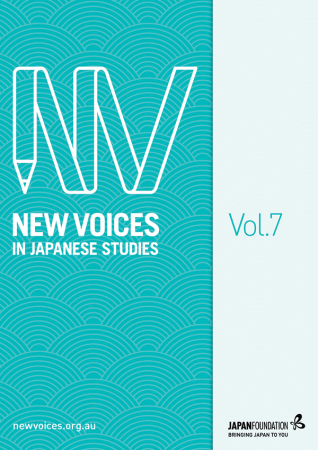
Volume 7
Published June 20, 2015
ISSN 2205-3166
https://doi.org/10.21159/nvjs.07
© The Japan Foundation, Sydney, 2015

This article analyses the Snow Land photographic series by Japanese photographer Hiroshi Hamaya [1915—1999] in relation to issues of modernity, nostalgia and discourses of agrarianism in 1940s and 1950s Japan. Hamaya is one of Japan’s most celebrated and influential documentary photographers at both a national and international level. His Snow Land series presents an idyllic view of life in the small mountain villages of Japan’s Niigata Prefecture, emphasising a sense of community and spiritual meaning that Hamaya perceived to be lacking in modern society. In this sense, Snow Land constituted a critique of modernity. Through engagement with theorists such as Heidegger, Foucault and Barthes, as well as critical writings on agrarian ideology, this article investigates the underlying assumptions that govern Hamaya’s depiction of snow country, demonstrating that the series is shaped by a modern worldview and is tied to ideological discourses of agrarianism.
This article employs Koike Mariko’s novel Koi [1995] as a case study to explore the functions of urban space in contemporary Japanese fiction. It examines the way that urban space works as an axis upon which the characters in Koi interact, and analyses how those interactions function in direct proportion to the nature of the urban space through which they move. This article also analyses the plot paradigm of sexual deviance/transgression during periods of social turbulence’, and identifies the interrelations between sexuality and socio-political factors. The representation of urban space in Koi, together with the socio-political backdrop of the 1970s student movements, is shown to complement the construction and development of the characters’ sexualities, thereby enriching the narrative and supporting Ai Maeda’s claim of urban space’s impact on literature.
This qualitative study aims to identify language learners’ motivations for studying Japanese by comparing these with motivations for learning or using additional languages. Thirteen students from an Australian university participated in the study, all of whom were learning Japanese as a second language (L2) and were also learners or users of additional languages. Utilising Dà¶rnyei’s (2005) L2 Motivational Self System and the concept of domains of possible selves’ (Unemori et al. 2004), this study investigates the language self- images (L2 selves) associated with Japanese, and contrasts them with the L2 selves associated with participants’ additional languages. Further, it explores the formation of L2 selves and the relationships between different L2 selves within a learner. Previous studies in this area have emphasised the negative impacts of the ideal English L2 self on motivations for learning subsequent languages. However, this study indicates that multiple ideal L2 selves can coexist without competition if each language has a firm link to a different domain (i.e., Interpersonal, Extracurricular, Career, Education) in a learner’s future self-image. The results of this study can be used to inform the practice of Japanese language teachers in multilingual contexts.
It is difficult to ride a bicycle or drive a car while wearing a kimono. Kimono are not considered suitable for contemporary life in Japan, and because of this, there is a pervading view that the Japanese traditional textile industry is in decline. However, Japanese designers and consumers are redefining Japanese clothing (wafuku) while retaining its traditional’ image. This project investigates how the contemporary reinvention of Japanese clothing embodies the process by which tradition and modernity interact, and helps us understand how new designs are a vehicle for designers’ and consumers’ expressions of Japanese culture.
This investigation examines the meaning of semantically similar English and Japanese proverbs. It uses textual data sourced from online corpora to highlight and compare the different cultural and conceptual elements embedded within these proverbs. The findings of this investigation demonstrate that matching proverbs from different languages is a potentially problematic exercise, both in dictionaries and in the second-language classroom.
FROM THE EDITORS
This article investigates the value of publishing for emerging researchers, using the specialist postgraduate journal New Voices in Japanese Studies as a case study within the Australian and New Zealand context. In doing so, it offers insight into the aims and editorial processes of New Voices in Japanese Studies and examines the benefits of publishing during research-degree candidature, drawing on feedback from recent contributing authors to provide an emerging scholar’s perspective. The article also touches upon the history of the journal, documenting how it has changed over time, and introduces the papers published in the most recent edition, Volume 7.
